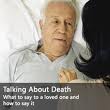Summer nights in Birmingham Alabama carry the humid burden of its journey through history which includes slavery, peonage, Jim Crow and the 1960 civil rights movement.
Birmingham was named one of the most dangerous cities in the USA just this week. Inequality and racism continue to rise over this city and my home state just as the green brown smoke lingered over the steel mills back in the 1950’s and 1960’s.
We have all seen the videos of Bull Connor, police dogs and water hoses that were unleashed on non-violent protesters which all culminated in the bombing and killing of four young girls a the 16th Street Baptist Church.
Dr. Alvin Poussiant, Black and White police officers of Birmingham gathered for a symposium at the University of Alabama Birmingham circa 1978. I was in the audience.
At that time, Birmingham led the nation in police shootings of Black men, for a mid-sized city. This one of the main reasons for the symposium.
During these presentations, the police officers gave their views of what should happen if they encountered a domestic (husband and wife) disturbance. A Black officer stated that he would attempt to de-escalate the situation with structured communication. The white police officer stated that he would use his shot gun and shoot the legs of the aggressors then attempt to communicate but that he would shoot both husband and wife if he had to. The audience recoiled from his words as if his bullets had penetrated us all. He was very stoic and matter of fact in his position. It was, after all, what he was trained to do. He went on to say that he would never hire a police officer who was afraid of black people and that he preferred to hire young rural white males who knew how to “handle” black people.
During this meeting, the Black officers gave us a set of instructions to follow if stopped by a white Birmingham police officer.
These are instructions are:
- Pull into a well-lighted area
- Roll the car window down just far enough to slip the officer your driver’s license
- Make no sudden moves
- Always say “yes sir”
- Keep both hands on the steering wheel at all times
- Look straight ahead and make no sudden moves
At the time, I lived in a place called Montevallo Gardens (MV). After two failed attempts to be admitted to medical school, I moved to Birmingham and Montevallo Gardens was close to the University of Alabama Birmingham (UAB) campus and affordable. MV was adjacent to a public housing community that was known as one of the toughest in Birmingham. It was not rare to hear gun fire in the night or witness fights in the parking lot. There were no sidewalks. The street lights did not work. I did not live in fear for where I lived. As long as I minded my business and showed respect for everyone around me I felt safe. I was enrolled in classes at UAB and working 330 AM until 930 as a pre-loader at the UPS center in Homewood Alabama. UPS was a twenty minute drive from where I lived and I typically left my apartment at 3 AM.
One morning, in mid-July, I left my apartment as usual. My route took me onto a very dark street that lead to a major intersection. One morning as I proceeded through the intersection, the heavy moist darkness was interrupted by blue lights and a single squelch of a siren that surrounded my consciousness causing my pulse to prepare for the encounter. As I was approached on the driver’s side of my car, all of the rules that I was to flow began to drip from my lips in agonizing whispers.
The police officer asked me where I was going. I told him to work at UPS. He said “I do not believe you”. He told me that I had not come to a full stop at a stop sign and that was a violation. I said “yes sir”.
His reply was “yes sir what”? At that moment, I felt as if I were being watched by something else. I was frozen in place by the officer’s tone and his stance and his hand on his gun. I continued to sense something that felt uncomfortable so I took a very slow glance to my right.
Birmingham is very hot in July and the nights are weighted down with the humid anticipation of the next day. My old Toyota corona was not air conditioned, so my windows were all the way down until my consciousness was penetrated by the whirl of blue lights. Following my “how to survive” being stopped by the Birmingham police, I had rolled up my driver’s side window but not the passenger side window.
The uncomfortable sensation that I had felt was the other police officer who had approached the car from the passenger side. He was leaning into my vehicle with his side arm pointed at my head.
I asked the officer “what now”?
He said, I don’t believe you work at UPS. So, “we will follow you to work”.
They trailed me to the security shack at UPS and into the parking lot.
The officer again approached me and said, “we will be there waiting for you in the morning and we want to see you come to a full stop”. I replied “yes sir”.
On my third attempt, I was accepted into medical school and became the first Black Internal Medicine Chief Medical Resident at the St Louis University School of Medicine. My travels took me from Birmingham, to Atlanta, St. Louis, Huntsville Alabama, Washington DC and now Chicago. In all the places that I have been, I have noted that police cars almost all have these words emblazoned on the side, ‘to serve and protect”.
I have asked family and friends, all Black males, how they feel when they are driving and a police car is behind them or they pass a police car at an intersection. The responses are unanimous. We all feel a bit nervous and bit uneasy. We all look in the rear view mirror. These feelings retreat when the police car is no longer visible. The same occurs when I pass a police car that is sitting in place or is even traveling in the opposite directions. Over the years, I noticed that my son’s did the same thing.
To be clear, I am not disparaging law enforcement. Whether you are Black, Hispanic, mixed race, elderly, obese, LGBT, poor, or under-educated there is a visceral over regulation associated with how society reacts to you. Some have the courage to resist, fight, sit down or stand up. We hear the labels in some subtle and some not so subtle ways, like, over achiever, very formal, you speak good English, too academic, or as I have been “complimented” many times as being “different”. One patient even said to me that he would bet that I was accepted into med school on a special program and a quota. These encounters remind me of that dark night that I was stopped by the Birmingham police. These words tell me that I remain under some lingering suspicion or that i (we) a remain somehow illegitimate.
For over 40 years, I have lived my life looking in the rear view mirror. We look in the rear view mirror when driving, while practicing medicine, while seeking employment, applying for rent or a home loan, when at work, whether it is unskilled labor or in corporate America. It is time to stop looking in the rear view mirror. We need to see and know what is coming around the next turn in the road.
My choice has been to make the road as I go and leave all else behind. Every day I try to avoid looking in the rear view mirror, but I am not there yet.
-ron






